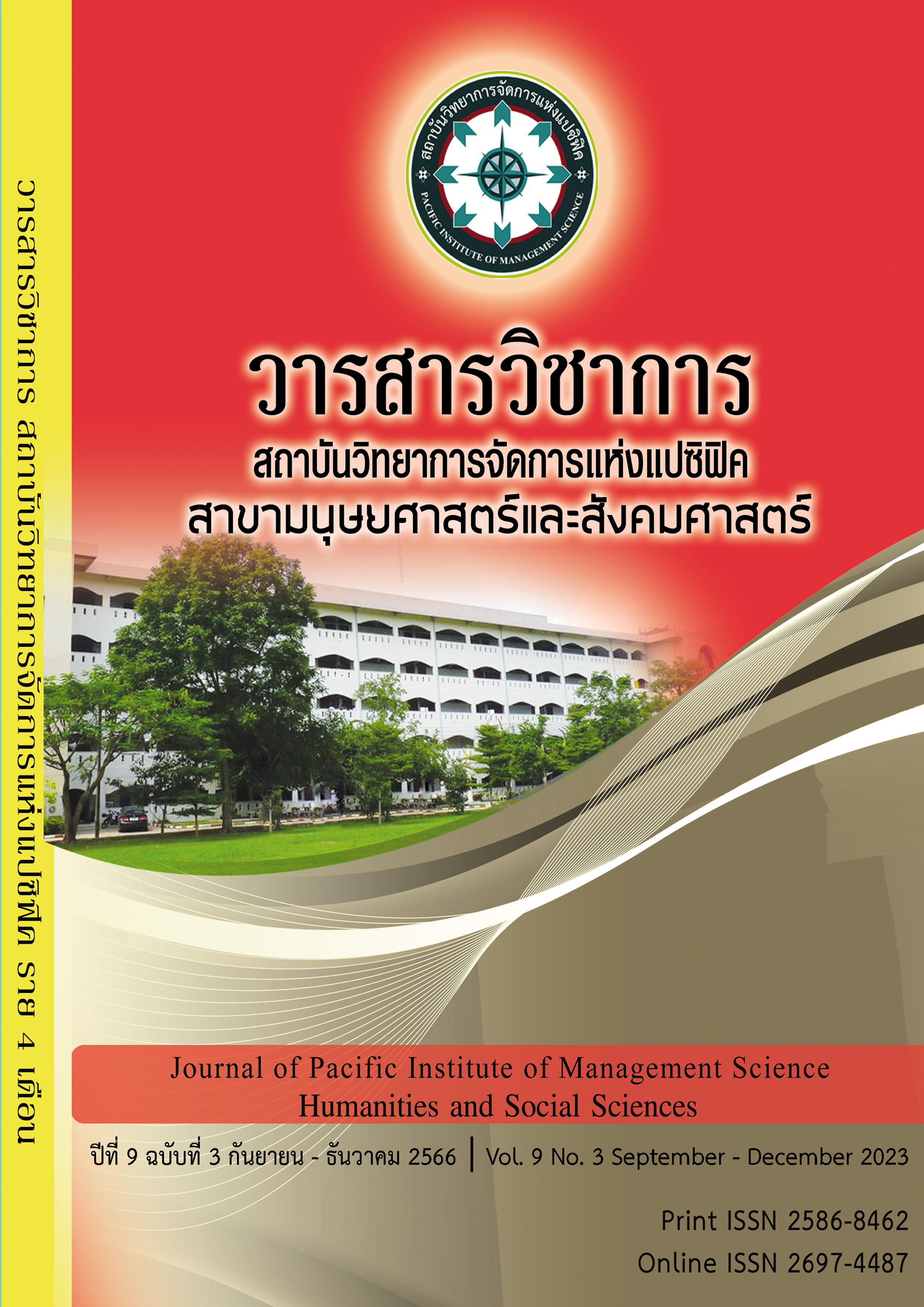The Usage of Metacognitive Strategy Instruction to Promote the Comprehensive Reading Abilities for Undergraduate Students
Keywords:
Metacognitive Strategy Instruction, Comprehension Reading Abilities, Undergraduate StudentsAbstract
English teachers in Thailand should be aware of the necessity of integrating reading strategy instruction into routine English sessions to improve high school students' reading comprehension and motivate them to read in the language. Evidence suggests that reading methods are not frequently taught in Thai middle and high schools; EFL students expressed the opinion that they ought to have been.
The exploration of this study were based on reading comprehension skills after four weeks of education using the metacognitive method CALLA. The effects of metacognitive strategies on the reading comprehension abilities of 30 undergraduate students were examined using a one-shot case approach. Throughout the intervention, individuals completed online reading assignments and used reading logs to consider their metacognitive awareness and self-regulation skills. Qualitative analysis was performed on the reading log data from the participants. The results show that teaching metacognitive strategies to students can improve their reading comprehension abilities. Furthermore, the findings suggested an increase in metacognitive awareness. They are independent and strategic readers. However, they also require exercises and lectures on vocabulary and syntax. Additionally, students should be taught Internet Reading Comprehension Strategies.
References
Aebersold,J.A., & Field,M.L.(2000). From reader to reading teacher. Cambridge: University Press.
Alyousef, H. S. (2005). Teaching reading comprehension to ESL/EFL learners. The Reading Matrix, 5(2), 143-154.
Anderson, N. J. (1999). Exploring second language reading: Issues and strategies.Toronto: Heinle & Heinle Publishers.
Byrnes, H. (1998). Reading in the beginning and intermediate college foreign language class. Modules for the professional preparation of teaching assistants in foreign languages, Grace S. Burkart, ed., Washington, DC:Center for International Education.
Carrell, P. L. (2002). Some causes of text-boundedness and schema interference in ESL reading. In P. L. Carrell, J. Devine, & D. E. Eskey (Eds.), Interactive approaches to second language reading (pp. 101-113).Cambridge:Cambridge University Press.
Chamot, A. U., & Robbins, J. R. (2006). Helping struggling students become good language learners. Derived from http://nclrc.org. On 18 September 2012.
Chamot, A. U., & O'Malley, J. M. (1994). The CALLA handbook: How to implement the Cognitive Academic Language Learning Approach. Reading, MA:Addison-Wesley.
Cromley, J.G. (2005). Metacognition, cognitive strategy instruction and reading in adult literacy. Review of adult learning and literacy. Vol. 5. New Jersey:Lawrence Erlbaum Associates.
Devine, T. G. (1986). Teaching reading comprehension: From theory to practice. Boston, MA: Allyn and Bacon.
Eskey, D. E. (2002). Holding in the bottom: An interactive approach to the language problems of second language readers. In P. L. Carrell, J. Devine, & D. E. Eskey (Eds.), Interactive approaches to second language reading (pp. 93-100). Cambridge: Cambridge University Press.
Goodman, K. (1998). The reading processes. In P. L. Carrell, J. Devine, & D. E.Eskey (Eds.), Interactive approaches to second language reading (pp. 93-100). Cambridge: Cambridge University Press.
Griffith, P.L. & Ruan, J. (2005). What is metacognition and what should be its role in literacy instruction? Metacognition in Literacy learning. New Jersey: Lawrence Erlbaum Associates.
Grabe, W. (2010). How reading works: Comprehension process. Reading in a second language. New York: Cambridge University Press.
Heaton, J. B. (1995). Writing English Language tests. New York: Longman.
Irwin, J. W. 1986. Teaching reading comprehension process. Englewood Cliffs:Prentice-Hall.
Phakiti, A. (2006). Modeling cognitive and metacognitive strategies and relationships to EFL reading test performance. Melbourne Papers in Language Testing 006. Derived from http://Itrc.unimelb.edu.au/mplt/papers/11_1Phakiti.pdf. on 20 September 2012.
Sumittra Angkhawatthanakun. (1997). Teaching English as foreign language.
Downloads
Published
Issue
Section
License
Copyright (c) 2023 Pacific Institute of Management Science

This work is licensed under a Creative Commons Attribution-NonCommercial-NoDerivatives 4.0 International License.
บทความที่ได้รับการตีพิมพ์เป็นลิขสิทธิ์ของ สถาบันวิทยาการจัดการแห่งแปซิฟิค
ข้อความที่ปรากฏในบทความแต่ละเรื่องในวารสารวิชาการเล่มนี้เป็นความคิดเห็นส่วนตัวของผู้เขียนแต่ละท่านไม่เกี่ยวข้องกับสถาบันวิทยาการจัดการแห่งแปซิฟิค และคณาจารย์ท่านอื่นๆในสถาบันฯ แต่อย่างใด ความรับผิดชอบองค์ประกอบทั้งหมดของบทความแต่ละเรื่องเป็นของผู้เขียนแต่ละท่าน หากมีความผิดพลาดใดๆ ผู้เขียนแต่ละท่านจะรับผิดชอบบทความของตนเองแต่ผู้เดียว







